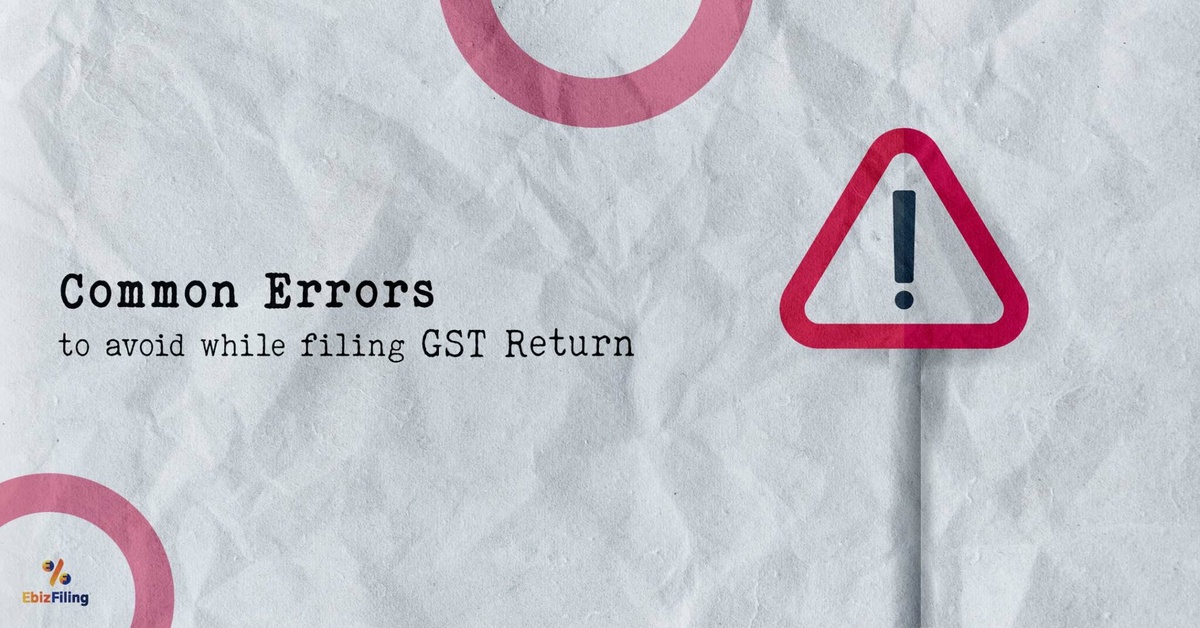Introduction:
Taxpayers must exercise particular caution while filing a GST return to avoid unneeded reconciliation problems. The most common errors to avoid while submitting a Goods and Service Tax Return (GSTR) are covered in this article. Let’s begin by comprehending what a GST return is and the various forms of GST returns before delving into those errors.
Understanding GST Return:
A GST return is a record that details the income/sales, expenses/purchases, and other information that must be reported to the tax authorities by a GST-registered person. Under the GST system, registered dealers are required to submit GST returns, which include GST filing, that address the following topics:
1. Sales
2. Input Tax Credit (GST paid on purchases)
3. Purchases
4. Output GST (tax on sales)
Different types of returns under GST (Goods and Service Tax)
GSTR-1, GSTR-3B, GSTR-4, GSTR-5, GSTR-5A, GSTR-6, GSTR-7, GSTR-8, GSTR-9, GSTR-10, GSTR-11, CMP-08, and ITC-04 are only a few of the 13 various types of GST reports. Not every taxpayer is eligible for every return, though. Depending on the taxpayer’s registration status and the nature of their firm, a particular sort of return must be filed. Self-certified reconciliation statements in Form GSTR-9C must also be submitted by taxpayers with a turnover of more than INR 5 crore.
Additionally, taxpayers can get GSTR-2A (dynamic) and GSTR-2B (static) statements of Input Tax Credit. Small taxpayers who are enrolled in the Quarterly Return Monthly Payment (QRMP) scheme may now use the Invoice Furnishing Facility (IFF) to submit their Business to Business (B2B) sales data for the first two months of the quarter. These small taxpayers must still submit monthly returns on Form PMT-06, though.
Here are seven major mistakes to avoid when filing GSTR:
1. Failing to File a Nil Return:
Many people are under the impression that they are exempt from filing a return if they don’t make any sales or transactions during the tax period. However, in accordance with GST rules, a person registered under GST is compelled to file a NIL return even in the absence of transactions. Penalties and even the termination of the GST registration may result from failing to file a NIL GST return.
2. Treating Zero-Rated and Nil-Rated Supplies Similarly:
Understanding the difference between zero-rated and nil-rated supplies is crucial. Generally speaking, goods and services that are exported from India or that are situated in a Special Economic Zone (SEZ) qualify as nil-rated supply, which are taxable items with a GST rate of 0%. Refund requests and departmental audits may become complicated if zero-rated or nil-rated supplies are treated differently. Accurately reporting nil and zero-rated supplies in the GST return should be given careful consideration.
3. Neglecting GSTR-1 and GSTR-3B Reconciliation:
Monthly GSTR-1 and GSTR-3B return reconciliation failure is a serious blunder. Individuals should make sure that these two returns are matched for each period before submitting GST returns.
4. Failure to Pay Reverse Charge Mechanism (RCM):
Under the reverse charge mechanism, recipients of some goods and services must pay tax. Reverse-charge tax omission can lead to increased interest costs and the loss of an input tax credit. It’s vital to remember that reverse charge tax must be paid via challan and cannot be done so utilizing the Input Tax Credit (ITC). Taxpayers may claim input tax credits after paying the reverse challan, which can be used to reduce output tax.
5. Incorrectly Entering Invoice Details in GSTR-1:
Details of the receiver invoice must be entered by suppliers in GSTR-1. The GSTR-2A form is automatically filled up with the data from the GSTR-1, enabling recipients to submit an input tax credit claim. The recipient risked losing the input tax credit if the supplier entered inaccurate invoice information or failed to submit the invoice. Incorrect invoice numbers, dates, incorporating B2B sales in B2C sales, and misrepresenting IGST, CGST, and SGST are all common mistakes in GSTR-1.
6. Declaring export sales in the regular sales column
The refusal of GST refunds may result from export sales being reported in the ordinary sales column rather than the zero-rated supply column. As a result, care must be taken when including information in the GST return about export sales.
7. Failing to File GST Returns on Time:
It is crucial to submit GST returns on time. If this is not done, the GST registration may be cancelled and there may be financial penalties.
Conclusion
Taxpayers can simplify the process of completing their GST returns and stay clear of unneeded hassles by avoiding these typical blunders and guaranteeing proper reporting.


No comments yet